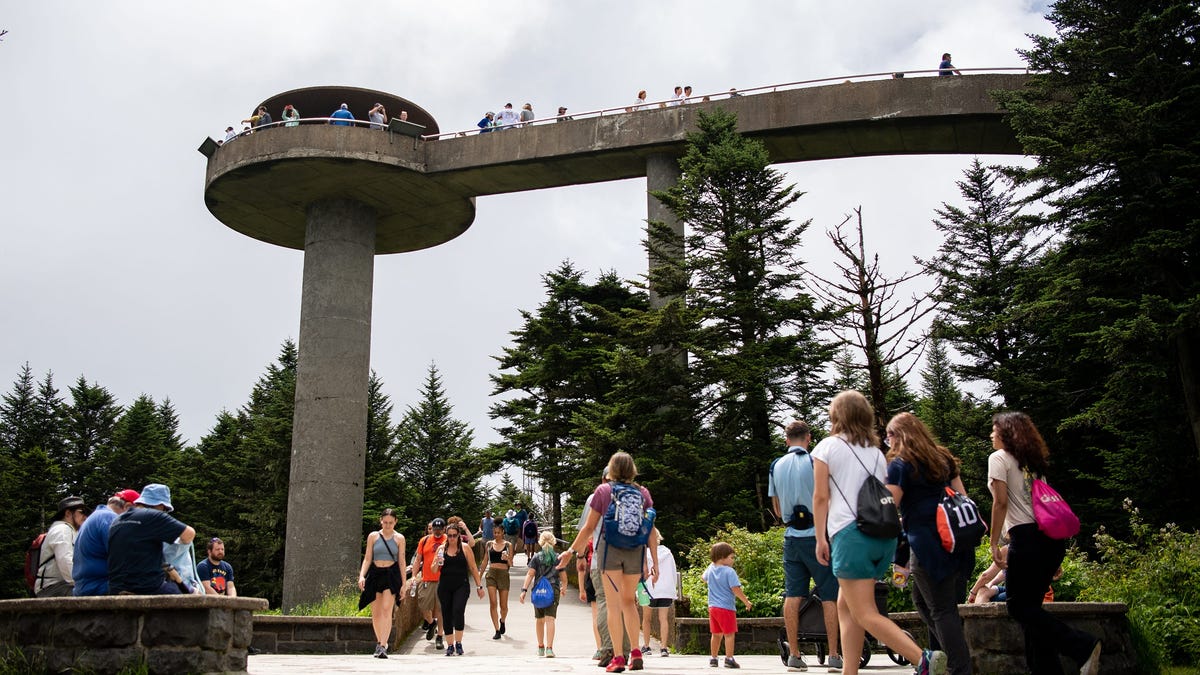‘Sacred’: Cherokee Name Returns to Tennessee’s Tallest Mountain, as Confederate General’s Name is Removed
KNOXVILLE, Tenn. − The tallest peak in Great Smoky Mountains National Park is being renamed from a Confederate general to its original Cherokee name, “Kuwohi.”
This change was approved this week by the U.S. Board of Geographic Names following a formal request from the Eastern Band of Cherokee Indians. The initiative was championed in 2022 by band members Mary Crow and Lavita Hill, who describe the 6,643-foot peak as “spiritual and sacred.”
“Kuwohi holds great significance for us,” Hill explained to the YSL News Network. “It’s a place where our medicine man and spiritual leaders came to pray and seek guidance from the creator.”
The Cherokee people first inhabited the mountain thousands of years ago, and the name they assigned means “the mulberry place.” In 1859, the peak was surveyed by geographer Arnold Guyot, who named it Clingmans Dome after Thomas Clingman, a senator from North Carolina who later became a Confederate general during the Civil War.
Nevertheless, the mountain has always been referred to as Kuwohi by the Cherokee, and it can be seen from the Qualla Boundary, the tribe’s homeland.
“This important moment honors our ancestors and deepens our bond to this sacred land,” Cherokee Chief Michell Hicks stated in a press release.
The park spans over 800 square miles across North Carolina and Tennessee, renowned for its dense forests, wildflowers, and picturesque waterfalls along 850 miles of hiking trails. It attracts over 12 million visitors annually, more than any other U.S. national park.
The National Park Service supports the name change; Superintendent Cassius Cash emphasized plans to collaborate with the Cherokee people to share their heritage and maintain the landscape together.
The park authorities close Kuwohi to the public for three half-days each year so that Cherokee students can visit the mountain. The children learn about the history of Kuwohi and the Cherokee from elders, native speakers of the Cherokee language, and cultural representatives.
Cash noted that updating signs, websites, and other materials with the name Kuwohi has already commenced.
“The Great Smoky National Park team was honored to support this process to officially restore the mountain’s name and acknowledge its significance to the Cherokee people,” Cash said. “The connections the Cherokee people have with Kuwohi and the surrounding lands predate its designation as a national park.”
Kuwohi and the Trail of Tears
Kuwohi, pronounced “ku-whoa-hee,” is a renowned site within the park, welcoming over 650,000 visitors each year. It stands as Tennessee’s highest point and ranks as the third-highest summit east of the Mississippi River, where the headwaters of the Little River begin.
Kuwohi also served as a refuge for some Cherokee who eluded U.S. soldiers during the coerced Trail of Tears march to the West. In 1838 and 1839, most Cherokee were driven from their ancestral lands in Georgia, North Carolina, and Tennessee to what is now Oklahoma, known as the “Trail of Tears.”
Many Cherokee found shelter in the mountains and avoided capture, leading to their recognition by the U.S. government as the Eastern Band of the Cherokee Indians in 1868. Meanwhile, those who relocated to Oklahoma formed the Cherokee Nation. Presently, the Eastern Band consists of around 14,000 individuals, residing on a 57,000-acre reservation known as the Qualla Boundary.
Who Was Thomas Clingman?
The former name paid tribute to Thomas Clingman, a U.S. congressman and senator from North Carolina who supported slavery and was expelled from the Senate because of his allegiance to the Confederacy. He served as a brigadier general in the Confederate Army during the Civil War.
Clingman was an enthusiastic explorer who measured several of the peaks that now form the national park. He passed away on November 3, 1897, and is interred in Asheville, North Carolina.
Renaming U.S. Landmarks in National Parks
There are ongoing efforts or have been completed to change names in honor of Native Americans. The Devils Tower in northeastern Wyoming, which rises 1,200 feet near the Belle Fourche River, is recognized by several tribes by names that mean Bear’s House, Bear’s Lair, or Bear Lodge.
- First Peoples Mountain, Yellowstone National Park (formerly Mount Doane)
- Engine Creek, Great Smoky Mountains National Park (formerly Injun Creek)
- Denali, Denali National Park and Preserve (formerly Mount McKinley)
- Black Elk Peak, Black Hills National Forest (formerly Harney Peak)

